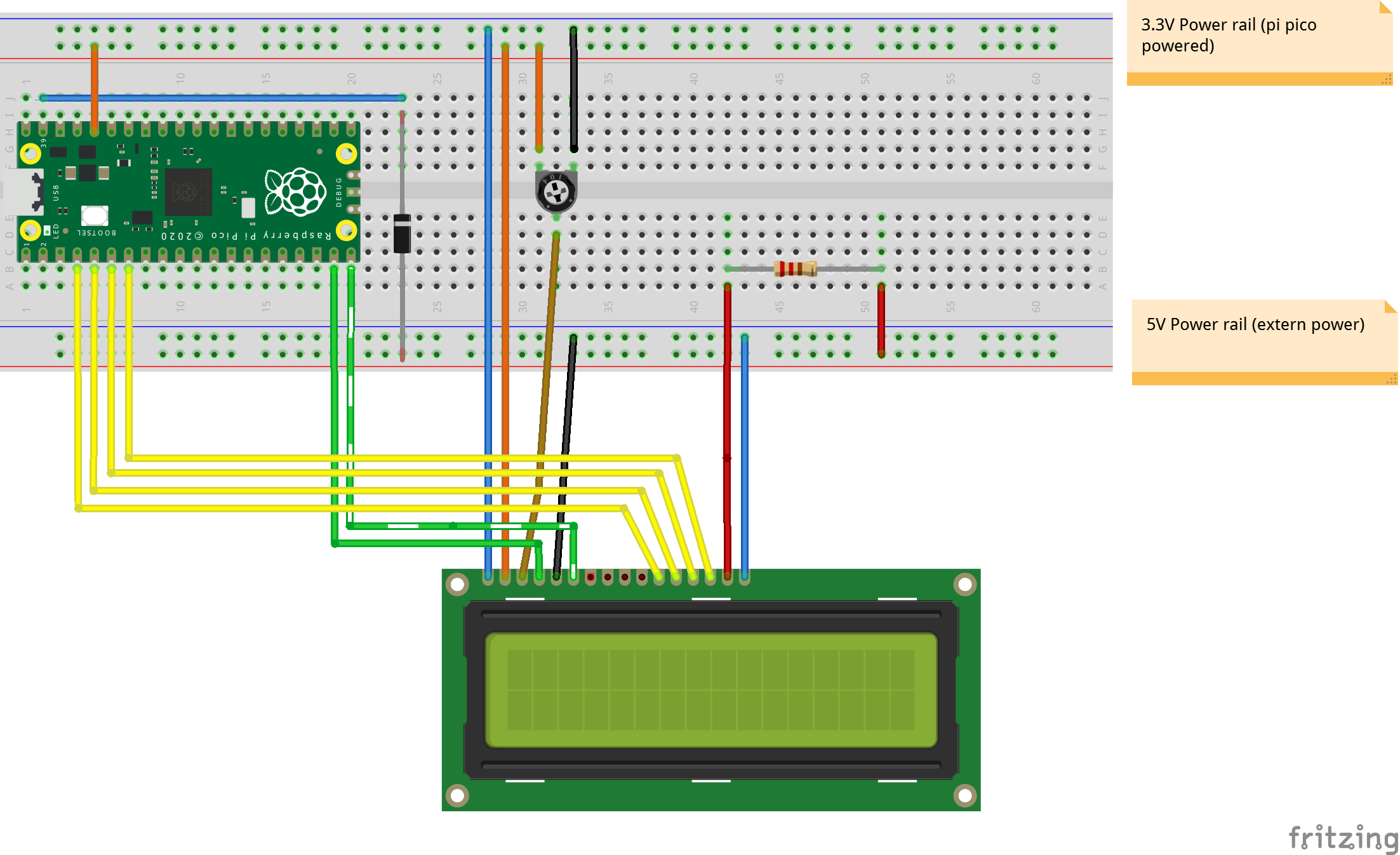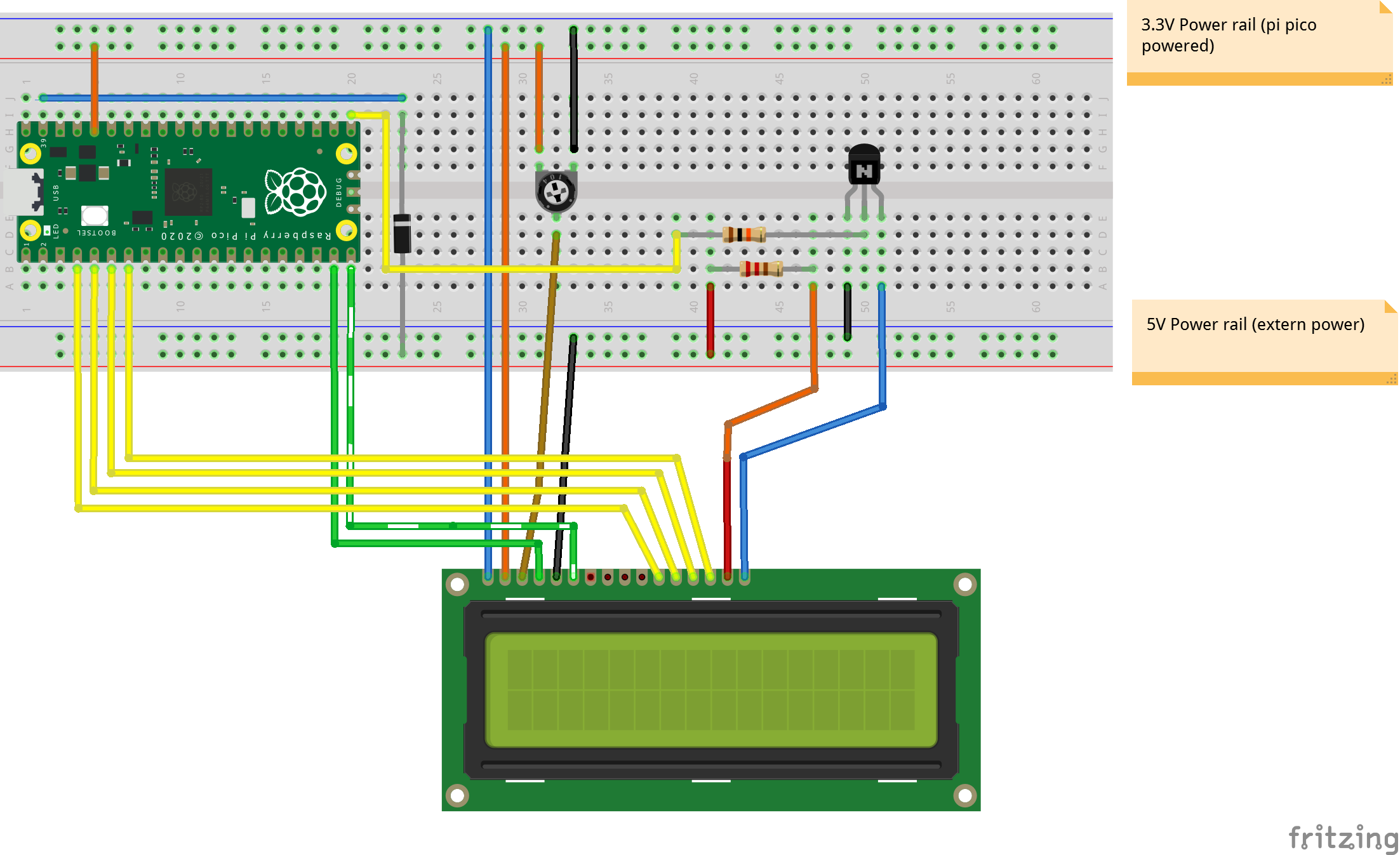LCD HD44780 controller library for pi pico (c++).
Library for the pi pico C/C++ SDK, allowing you to steer an HD44780 type of LCD display with direct connection to 4 databits (wiring scheme is displayed below). I only tested with 16x2, but 20x2, 40x2, 16x4 and 20x4 also should work.
The display works well on 3.3V; also the backlight. You might, however, want to power the backlight with 5V and independently from the pico for a clearer display and less power consumption from the pico. I included the wiring for this set-up. Powering the backlight from 3.3V did work at my set-up though, but was a bit bleak.
do a git clone https://github.com/martinkooij/pi-pico-LCD
if you want to compile, you can use the provided example as a guideline. If the PICO SDK is installed according to the guidelines on the raspberry pi pico site the following should work:
cd pi-pico-lcd/example
mkdir build && cd build
cmake ..
make
or on windows
cd pi-pico-lcd/example
mkdir build && cd build
cmake .. -G "NMake Makefiles"
nmake
Create an object of type LCDdisplay. The creator takes 8 (integer) arguments as follows:
LCDdisplay myDisplay(pinDB4, pinDB5, pinDB6, pinDB7, pinRS, pinE, char_width, no_lines);
The first 6 arguments gives the GPIO connection pins that should be connected to the four DataBits, RS and E respectively.
The following methods on the created object are provided:
init()inititializes the connection with the LCD. Must be executed before any other operation.clear()clears the display and put the cursor to 0,0.goto(int c, int l)go to character "c" on line "l". 0,0 is top left; 0,1 is second line, leftmost character.print(const char *)prints the string, from the cursor. If string is some characters too long to fit it will be truncated. When it is far too long to fit it will cause random behavior.print_wrapped(const char *). Clears the screen, moves the cursor to 0,0 and tries to print the whole string on the LCD screen by wrapping.cursor_on()Sets cursor on. Blinking is implied. (see next if you want the same call but more control)cursor_on(bool blink)Sets the curson on. Blinks when blink is true, no blinking when false.cursor_off()No cursor shown on LCD (default).display_on()Switches display on (default).display_off()Switches display off.
You can see example usage in example/pico_lcd_example.cpp
As added fun, you can control the backlight brightness level (via PWM method) by defining an GPIO pin. The GPIO pin itself it not strong enough to drive the LCD backlight directly, so a transistor is advised. I coupled the transistor to the 5V rail (see Fritzing diagram below) and added a 220 OHM resistor, but your mileage may vary.
In this case you can add the backlight pin to the constructor.
LCDdisplay myDisplay(pinDB4, pinDB5, pinDB6, pinDB7, pinRS, pinE, pinBL, char_width, no_lines);
Again you must first do an init() again before anything else. After this you can set your brightness level to x. x is a percentage ranging from 0..100.
set_backlight(int brightness)brightness can be set between 0 (off) and 100 (fully on).
Building the advanced usage example: go to the directory example_backlight. Follow the procedure I described earlier for the example.
4-mar-2021: added some useful methods to the library
3 -mar-2021: Added backlight option
27-feb-2021: First release




